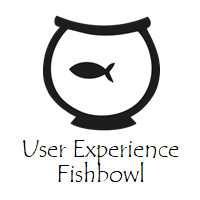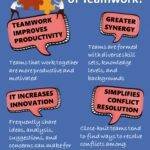
The User Experience Fishbowl is ideally suited for unleashing the local wisdom
User Experience Fishbowl consist of an inside circle of people with direct experience with a challenge of interest to those in one or more outer circles. The inside circle shares experiences based around a common challenge while the outer circles listen.
A subset of people with direct field experience can quickly foster understanding, spark creativity, and facilitate adoption of new practices among members of a larger community.
Fishbowl sessions have a small inside circle of people surrounded by a larger outside circle of participants. The inside group is formed with people who made concrete progress on a challenge of interest to those in the outside circle.
The fishbowl design makes it easy for people in the inside circle to illuminate what they have done by sharing experiences while in conversation with each other. The informality breaks down the barriers with direct communication between the two groups of people and facilitates questions and answers flowing back and forth.
This creates the best conditions for people to learn from each other by discovering answers to their concerns themselves within the context of their working groups.
Four Structural Elements – Min Specs
1. Structuring Invitation
- Ask those in the fishbowl to describe their experience—the good, the bad, and the ugly—informally, concretely, and openly. Invite them to do it by talking among themselves as if the audience were not present.
- Ask them to avoid presenting to the audience.
- Invite the people outside the fishbowl to listen, observe nonverbal exchanges, and formulate questions within their small groups.
2. How Space Is Arranged and Materials Needed
- Three to 7 chairs in a circle in the middle of a room
- Microphones for inner circle if whole group is larger than 30 to 40
- If possible, a low stage or bar stools make it possible for people in the outer circle to better see the interactions
- As many chairs as needed in an outer circle around the inner circle, in clumps of 3 to 4 chairs
- In large groups, have additional microphones ready for outside circle questions
3. How Participation Is Distributed
- Everyone in the inner circle has an equal opportunity to contribute
- Everyone in the outer circle has an equal opportunity to ask questions
- One inner circle group of 3–7 people
- One outer circle in multiple small satellite groups of 3–4 people
4. Sequence of Steps and Time Allocation
- Explain the fishbowl configuration and steps. 2 min.
- Inner circle conversation goes on until it ends on its own. 10 to 25 min.
- Satellite groups in outer circle formulate observations and questions. 4 min.
- Questions submitted to the inner circle are answered, and back-and-forth interaction between inner and outer circles goes on as needed until all the questions are answered. 10 to 25 min.
- Debrief using W³ (What? So What? Now What?) and ask, “What seems possible now?” 10 to 15 min.
Purposes and Objectives
- Get down-to-earth field experience and all the questions and answers about new endeavors out on the table for everyone to understand at the same time
- Create conditions for new ideas to emerge
- Build skills in listening, storytelling, pattern-finding, questioning, and observing
- Celebrate early adopters and innovators who have gained field experience, often failing forward and vetting the prototype
Tips
- Write the invitation that you’d like the inside circle to discuss on a flip chart so that they can refer to it during the discussion
- Invite people with experience with a challenge upfront or simply ask who would like to share their experience
- Encourage inner-circle people to share concrete, very descriptive examples rather than opinions
- Advise inner-circle people to imagine being in a car or a bar sharing stories and having a conversation
- Encourage everyone to share both successes and failures, “the good, the bad, the ugly”
- When you do fishbowls with large groups, make sure to add microphones and/or a raised podium or bar stools to keep the inside circle visible to the outside circles
- Enforce the “no speeches” and “talk to each other, not to the outer circle” rules!
- Collect ALL the questions from the outside circle before the “fish” restart their conversation
- Have fun and encourage animated storytelling


